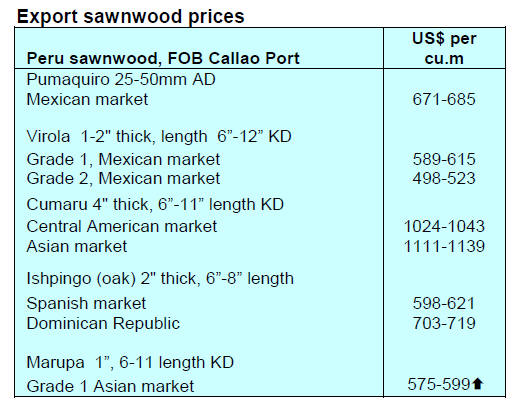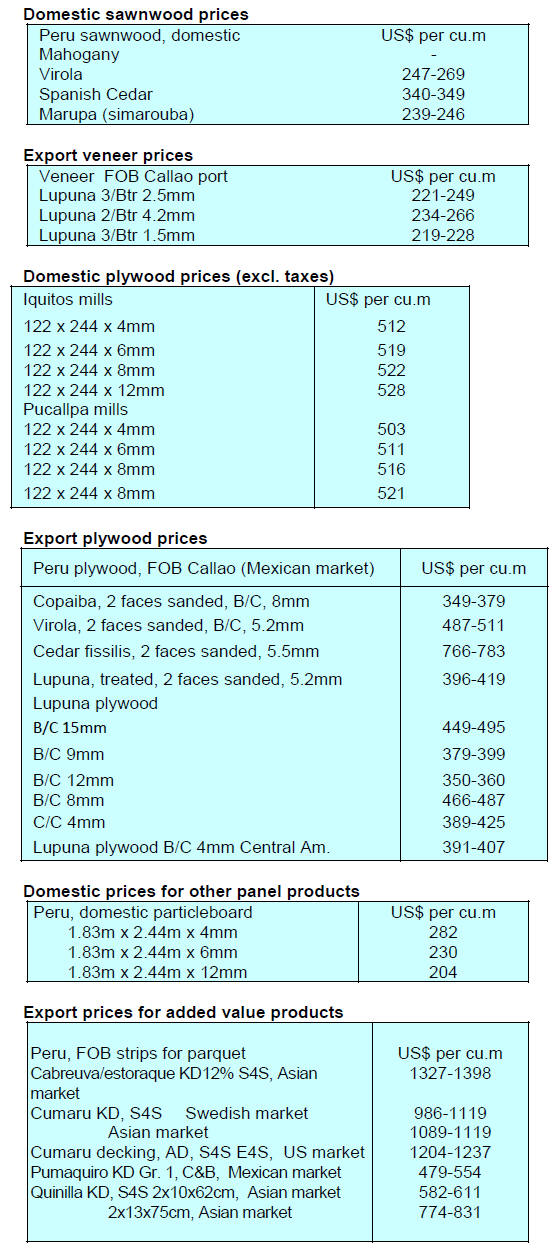4.
INDONESIA
Association convinced new EU
deforestation free trade
proposal will not disrupt exports
According to the Chairman of the Association of
Indonesian Forest Concession Holders (APHI), Indroyono
Soesilo, exporters of wood products believe the new draft
proposal from the European Union aimed at reducing
deforestation will not hamper Indonesia's exports.
He said Indonesian products meet the legality criteria
determined by the EU and that the products exported to
the European Union come from legal timber and are not
the product of deforestation.
The Association reports forest and wood product exports
to the EU reached US$1.24 billion as of October 2021
exceeding both 2020 and 2019 levels.
It is Indroyono understanding that the EU draft proposal
states that companies must provide geographic coordinates
showing the origin of the raw material processed for
export to the EU market.
The EU draft proposal would prohibit agricultural
commodities and their derivatives from entering the EU
market if they are produced from raw material from
deforested or degraded land.
See:
https://ekonomi.bisnis.com/read/20211126/12/1470520/eksportir-produk-kayu-yakin-kebijakan-baru-uni-eropa-tidakmengganggu.
In related news, APHI Executive Director, Purwadi
Soeprihanto, said the deforestation rate was reduced to
only 115,000 hectares last year which is very encouraging
and the Association supports a permanent moratorium on
the issuance of permits for harvesting in peatlands and
primary forests.
See:
https://www.tribunnews.com/bisnis/2021/11/30/aphideforestasi-sudah-turun-signifikan.
Prospects in the furniture and craft industries
The Indonesian Furniture and Craft Industry Association
(HIMKI) Secretary General, Heru Prasetyo, expressed
optimism on prospects for the furniture and handicraft
industry even in the face of the COVID-19 pandemic.
Between January and November 2021 production by the
furniture and craft industries expanded over 30% year on
year.
The HIMKI supports small scale furniture and crafts
enterprises through training and developing marketing
especially through participation at trade shows and
exhibitions.
See:
https://www.msn.com/id-id/ekonomi/bisnis/industri-mebel-dankerajinan-tumbuh-32-persen-himki-prospek-yang-cerah/ar-AARibvv?ocid=BingNewsSearch
Silvicultural technique accelerates merbau growth
The Ministry of Environment and Forestry (KLHK) has
released details of a silvicultural technique to accelerate
the growth of merbau. The Director General of Sustainable
Forest Management, Agus Justianto, said this innovation
was developed collaboratively to achieve sustainable
forest resource management.
He further stated that the launching of the merbau
initiative will result in an increase in the productivity of
the natural forest and sustainable management of forest
resources, especially in Papua and West Papua Provinces.
The domestic press reports that Indroyono said "Through
intensive silviculture the target for natural forest wood
productivity of 120 cubic metres per hectare with a 20-
year cycle for meranti and a 30-year cycle for merbau can
be realised.”
See:
https://infopublik.id/kategori/nasional-sosialbudaya/585601/klhk-rilis-inovasi-teknik-silin-percepatpertumbuhan-kayu-merbau
New Business approach in the forestry sector
At the 2021 National Conference of Association of
Indonesian Forest Concession Holders the Minister of
Environment and Forestry, Siti Nurbaya, expressed her
gratitude for the support of APHI members in accelerating
the reorientation of businesses in the forestry sector.
She said that the government still needs support so that
businesses can contribute to forestry development,
especially in relation to Law No. 11/2020 concerning Job
Creation.
In response the Chairman of APHI, Indroyono Soesilo,
stated that APHI members will continue to support the
government programmes and will encourage dialogue on
how best to configure a new competitive and sustainable
forestry business system to meet the requirements of the
Job Creation Law.
He said that one of the ways to reorient forestry business
was to harness forest ecosystem services, a concept
developed by the government.
See:
https://investor.id/national/273730/menteri-lhk-aphi-dorongaktualisasi-ekosistem-bisnis-baru-sektor-kehutanan
and
https://www.dimensinews.co.id/180091/menteri-lhk-aphipendorong-aktualisasi-ekosistem-bisnis-baru-sektorkehutanan.html

5.
MYANMAR
Fading prospects for the timber
industry
2021 will be remembered as the year of the fading
prospect for timber industry. In contrast to other extractive
industry the entire process starting from the purchase of
logs to the delivery of products to the port is regulated and
controlled by the respective departments of the
government. Even the container has to be sealed by Forest
Department officers before leaving the factory otherwise
the container will not be allowed into the port for
shipment.
Timber exporters have been complaining against
restrictive practices but the regulators say that a relaxation
of current practices is not feasible under the current
circumstances.
In addition to the tight control of export procedures inside
the country there are also other challenges in importing
countries such as the measures adopted by the EU and the
USA against Myanma Timber Enterprise and the market
concerns on the verification of timber legality.In addition
to the various regulations the Covid control measures are
also disrupting production.
A few mills decided to close temporarily and few ceased
operations and sold-up. In most cases manufacturers had
to switch production for the local market. The export of
veneer and flooring to India, China and some
ASEAN countries is expected to continue but the export of
teak products to EU and USA will decline sharply in the
coming years.
The current administration has ordered a halt to the
export of the sawnwood as of 1 January 2023 which is
another challenge and millers and manufacturers feel that
it is the time to stop or start a new business line.
State Administration Council co-leader - the economy
is suffering
According to the online Irrawaddy News, Senior-General
Min Aung Hlaing admitted Myanmar’s economy was
suffering from the impact of Covid and the post-coup
political upheaval which has forced foreign firms to leave
and a boycott by the people of enterprises linked to the
military.
Myanmar's foreign trade deficit reached nearly US$57
million by mid-November in mini budget period of 2021-
2022 FY, according to the Ministry of Commerce.
See:https://www.irrawaddy.com/news/burma/junta-watch-coupleaders-confession-bogus-show-of-leniency-and-more.html
Statements by the UN interfere internal affairs says
Ministry
Myanmar’s Ministry of Foreign Affairs (MOFA) has been
reported as saying statements by the UN are interfering
with the judiciary and internal affairs. The statement said
everyone is equal before the court and no one is above the
law. It said unilateral criticism of the decisions of a
sovereign state's domestic jurisdiction is inappropriate and
interferes with the judiciary and internal affairs of
Myanmar.
See:
https://elevenmyanmar.com/news/statements-issued-by-theun-officials-interfere-with-judiciary-and-internal-affairs-mofa
Declaration by the High Representative Josep Borrell
on behalf of the European Union on the situation
The European Union strongly condemns this politically
motivated verdict, which constitutes another major setback
for democracy in Myanmar since the military coup on 1
February 2021.
These proceedings are a clear attempt to exclude
democratically elected leaders, including Aung San Suu
Kyi and the National League for Democracy, from the
inclusive dialogue process called for by ASEAN’s Five
Point Consensus. The European Union reiterates its full
support to the ongoing efforts by ASEAN and the ASEAN
Chair’s Special Envoy, in close cooperation with the
Special Envoy of the UN Secretary-General.
The military’s actions show complete contempt for the
will of the people, expressed clearly in the November
2020 elections.
Since 1 February, the people of Myanmar have
overwhelmingly rejected the military coup and
demonstrated their unwavering desire for a nation in
which the rule of law, human rights and democratic
processes are respected, protected and upheld.
The failure so far to restore democracy, compounded by
the COVID-19 pandemic and widespread violence and
conflict, is driving the country towards a large-scale
humanitarian crisis. It is imperative that the Myanmar
military authorities allow a swift return of Myanmar to the
path of democracy.
The European Union reiterates its urgent calls for the
immediate and unconditional release of all political
prisoners as well as all those arbitrarily detained since the
coup.
See:
https://www.consilium.europa.eu/en/press/pressreleases/2021/12/06/myanmar-burma-declaration-by-the-highrepresentative-josep-borrell-on-behalf-of-the-european-union-onthe-situation/
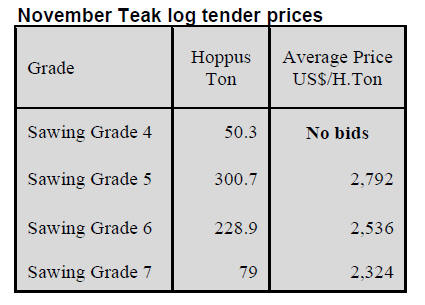
6. INDIA
Economy shows signs
of recovery
Data from the National Statistical Office indicates the
Indian economy grew 8.4% year on year in the third
quarter of this year but this was from a very low base in
2020. The good performance was supported by increased
vaccination and a rise in agricultural output, public
spending and a revival of the services sector.
As the number of people vaccinated rises and as the
impact of the fuel duty cuts introduced by the government
take effect confidence is expected to rise spurring demand
howeve,r there is concern that once the effect start being
seen, rising higher prices and uncertainty due the new
Covid variant Omicron could slow the pace of recovery.
See:
https://indianexpress.com/article/business/economy/indiagdp-q2-results-covid-economy-7648981/
Prices for manufactured products, including wood
products rising
The Ministry of Commerce and Industry has reported the
official Wholesale Price Index for ‘All Commodities’
(Base: 2011-12=100) for September 2021 increased to
133.8 from 133.0 in August.
The annual rate of inflation was 12.5l) for October, 2021as
compared to 1.31% in October, 2020. The high rate of
inflation in October 2021 is primarily due to rise in prices
of mineral oils, basic metals, food products, crude
petroleum and natural gas, chemicals and chemical
products.
For manufactured products 18 groups saw price increases,
3 groups saw decreases and for one group the price
remained unchanged in October 2021 compared to
September 2021.
The increase in prices is mainly contributed by
manufacture of basic metals; chemicals and chemical
products; electrical equipment; rubber and plastics
products, textiles and wood products.
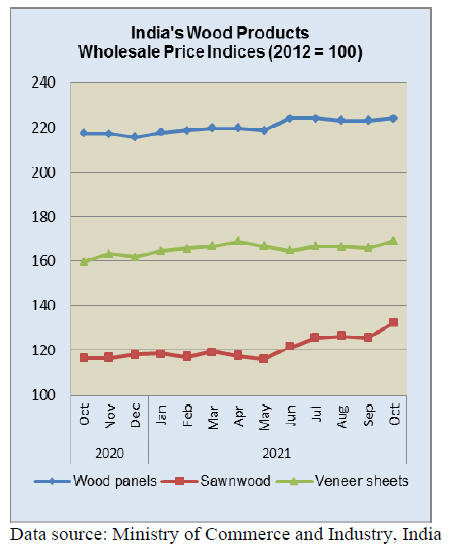
India's furniture market set to surge
According to data provided by a Bengaluru market
research firm ResSeer, pent-up and deferred demand is
forecast to drive furniture sales to new highs over the next
5 years. The report says online furniture sales will triple
and there will be an almost doubling of annual spending
on furniture.
See:
https://www.business-standard.com/article/companies/indias-furniture-home-market-to-reach-40bn-by-2026-report-121110800300_1.html
Manufacturing at 10-month high
India’s manufacturing activity grew at its fastest pace in
10 months in November as companies expanded the
sourcing of production inputs encouraged by strengthening
demand. Data released by the IHS Markit showed
Purchasing Managers’ Index (PMI) rose to 57.6 in
November from 55.9 in October. A reading above 50
indicates expansion in economic activity and a number
below that signals contraction.
Covid school closures hurts India’s ‘pencil village’
One small area in Kashmir supplies almost 90% of the
wood that is used to manufacture pencils but, because of
school closures and lockdowns demand has collapsed.
Most of the pencils in India are made from poplar timber
and in addition to supplying local demand there is a
thriving export business delivering pencils to more than
150 countries.
Due to the drop in demand and covid control measures the
owners of pencil factories reduced their workforce by
more than half. The timber suppliers and the factory
workers have to wait for demand to pick up.
See:
https://thepolicytimes.com/the-cost-of-covid-schoolclosures-effect-on-indias-pencil-village/
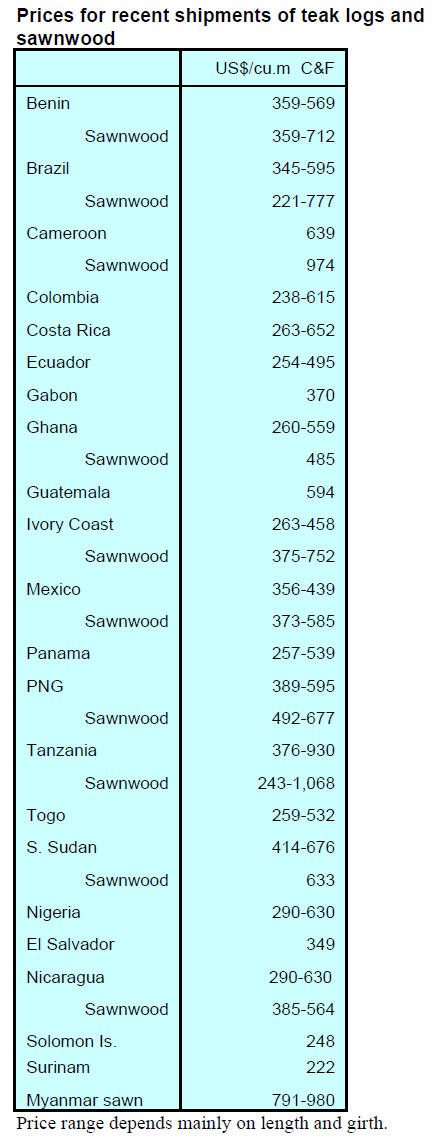
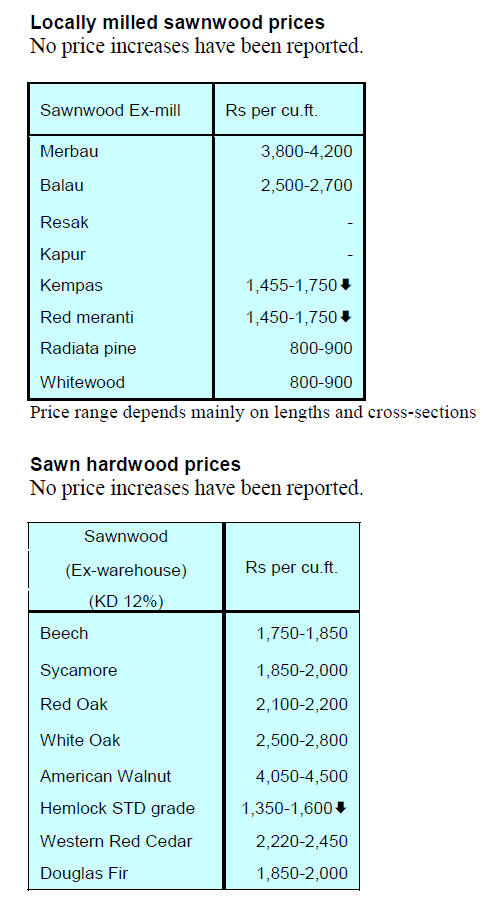
Plywood
The gradual easing of Covid restrictions and a boost to the
pace of vaccinations are helping plywood manufacturers
recover from the effects of the pandemic control measures
on the supply chain and they are anticipating resuming full
production.
After a year of financial hardship the plywood industry is
showing signs of recovery as real estate sales increase.
See:
https://timesofindia.indiatimes.com/city/kolkata/powerply/articleshow/87955005.cms
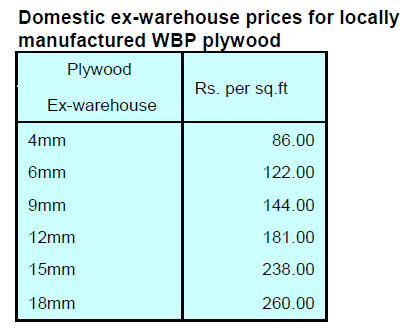
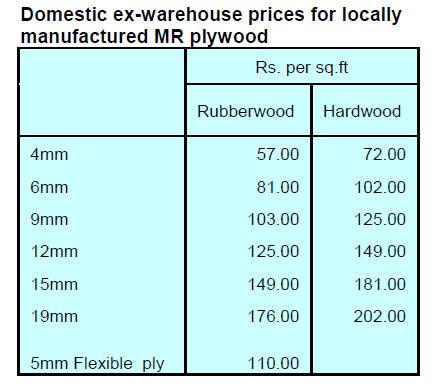
7.
VIETNAM
Trade highlights
In November 2021, Vietnam's wood and wood product
(W&WP) exports to the EU reached US$45 million, up
2.3% compared to November 2020. In the 11 months of
2021, W&WP exports to the EU market were estimated at
US$528.1 million, an increase of 16% over the same
period in 2020.
Exports of kitchen furniture in November 2021 are
estimated at US$82 million raising the total export of this
item in 11 months of 2021 to US$832.8 million, up 24%
over the same period in 2020.
Vietnam's export of rattan, bamboo and other types of
NTFPs in November 2021 reached US$70 million, up
2.5% compared to October 2021 and up 23% compared to
November 2020.
Over the 11 months of 2021 Vietnam's exports of NTFPs
of all kinds is estimated at US$771 million, an increase of
42% over the same period in 2020.
Wood enterprises speed up production to meet year-end
orders
According to the Ministry of Industry and Trade Export and
Import Department wood and wood product exports in
November reached US$1.15 billion, up 21% compared to
October 2021 but down 7% compared to November 2020.
Exports of wood products reached US$840 million, up 35%
compared to October 2021 but down 17% compared to
November 2020.
Production in Vietnam has returned to normal and
businesses operating in the wood industry are accelerating
production to keep up with signed export orders for the last
month of the year and the first half of 2022.
Export activity by the timber industry increased in October
and November 2021 although the export value is still not
equal to the same period in 2020.
Overall, the timber industry maintained good growth in the
first 11 months of 2021 thanks to the efforts of enterprises
to maintain production when the epidemic broke out in
many provinces and cities across the country. Production
recovered quickly after the easing of social distancing.
At the current growth rate it is estimated that exports of
wood and wood products will reach US$14.3 billion in
2021, up 14% compared to 2020 and completing 98.7% of
the target set for the year.
The driver of growth for the timber industry has been
wooden furniture production. Exports of wooden furniture
accounted for 68% of the total export value of wood and
wood products in the first 11 months of 2021.
See:
https://en.nhandan.vn/business/item/10873602-woodenterprises-speed-up-production-to-meet-year-end-orders.html
Rising imports of oak from EU
Vietnam's imports of oak from the EU increased in the
first 10 months of 2021 reaching 80,800 cu.m, worth
US$41.8 million, up 54% in volume and 66% in value
over the same period in 2020 and accounted for 30% of
total oak imports imported into Vietnam.
Oak a major import species
Vietnam's imports of oak in November 2021 are estimated
at 24,400 cu.m worth US$15.4 million, up 10% in volume
and 10% in value compared to October 2021. Compared to
November 2020 imports dropped 19% in volume and 7%
in value. In general, over 11 months of 2021 oak wood
imports totalled at 292,200 cu.m, worth US$164.8 million,
up 12% in volume and 33% in value over the same period
in 2020.
Price of imported oak
The price of imported of oak logs in the 10 months of
2021 averaged at US$557.5 per cu.m, an increase by 19%
over the same period in 2020.
In particular, the average price of oak logs imported from
the US increased by 24% over the same period in 2020.
The price of oak logs imports from the EU increased by
8%, reaching US$516.8 per cu.m, from Ukraine the price
increased by 18% to US$581.40 per cu.m.
Volume and price of imported sawn oak
According to statistics of the General Department of
Customs in the 10 months of 2021 imports of sawn oak
reached 182,300 cu.m, worth US$111.5, up 9% in volume
and 37% in value over the same period in 2020 with the
average price of US$611 per cu.m.
Vietnam to plant extra 20,000 ha coastal forest to cope
with climate change
Vietnam will plant 20,000 ha of forests as part of a project
to protect and develop coastal forests in response to
climate change and to push green growth over the next 10
years.
It also aims to effectively promote the role and functions
of forests in coastal defence, environment protection and
coastal infrastructure systems as well as prevent
desertification and land degradation while conserving
biodiversity, reducing greenhouse gas emissions as well
as creating jobs for people in coastal areas.
According to a report of World Bank, Vietnam is highly
vulnerable to sea level rises and storms along the coast,
highlighting the critical importance of mangrove and
coastal forests.
See:
https://vietnamnews.vn/environment/1057328/viet-nam-toplant-extra-20000ha-coastal-forest-to-cope-with-climatechange.html
Cambodia, Vietnam cooperation on forest sector
Cambodia and Vietnam have expressed their commitment
to strengthen forest sector cooperation, mainly combating
the cross-border trade of timber and wild animals.
Cooperation in the field of forest management and the
prevention of deforestation and cross-border trading in
illegal timber and wildlife” were the main topics the two
parties discussed during a recent dialogue.
See:
https://www.khmertimeskh.com/50981432/cambodiavietnam-commit-to-cooperation-on-forest-sector/
8. BRAZIL
Sustainable use of public forests
The Environment and Sustainable Development
Committee of the Chamber of Deputies has approved a
proposal which will provide for the allocation of
concessions in public forests. A draft bill (no. 5518/20)
amends several clauses of the 2006 Public Forest
Concession Law. About 20 million hectares of public
forests are said to suitable for sustainable forestry.
However, since the Public Forest concession law was
enacted in 2006 only 1 million hectares have been under
forest concession contracts.
The draft bill enables the allocation of forest concession to
legal entities for conservation, restoration and sustainable
harvesting. The concessionaire may, for example, have
access to the forest's genetic resources for the purposes of
research and development, bioprospecting and plant
collections aspects prohibited in the old public forest
concession law. Companies will also be able to explore
trade in carbon credits for the concession area.
See:
https://agenciabrasil.ebc.com.br/en/politica/noticia/2021-12/chamber-commission-expands-sustainable-use-public-forests
Domestic consumers appreciate SFM wood products
According to the Center of Producing and Exporting
Industries of the State of Mato Grosso (CIPEM) the
domestic market appreciates wood products manufactured
from sustainably managed forests. According to the Forest
Products Commercialiation and Transport System
(Sisflora/MT) sales to the domestic market by enterprises
in Mato Grosso have increased by 50% since 2020 and
there has been a corresponding decline in exports.
From 2018 to October 2021 the volume of exported fell by
23%, from 85,183 cu.m to 65,096 cu.m. According to
CIPEM prices in the domestic market have been rising and
this made the domestic market more attractive.
The state of Mato Grosso has registered an annual growth
varying between 200 and 300,000 ha. of forests under
SFM according to CIPEM. Today, Mato Grosso has 4.7
million hectares of forests under SFM and the
commitment of the State Government is to reach 6 million
hectares by 2030.
Opportunities for exporters
The Brazilian Furniture Sector Project is an initiative of
ABIMOVEL (Brazilian Association of Furniture
Industries) and Apex-Brazil (Brazilian Export and
Investment Promotion Agency) which aims to increase the
participation of the Brazilian industry in the international
market.
The second largest economy in Latin America, Mexico, is
one of the target markets for Brazilian furniture exporters.
Brazilian furniture exports to Mexico increased 89% year
on year in September 2021.
In December this year the ABIMOVEL and Apex-Brazil
project released a report to participating companies ‘Study
of Opportunities for Companies with Potential and
Exporters – Mexico Edition’ which was developed in
partnership with IEMI – Market Intelligence.
The report identifies that furniture production in Mexico is
traditionally directed to foreign markets, especially the
United States as a result over 50% of the apparent
consumption of furniture in Mexico in 2020 was supplied
by imports and this creates an opportunity for Brazilian
exporters.
See:
http://www.brazilianfurniture.org.br/en/brazilianfurniture
In related news, IEMI – Market Intelligence in partnership
with Abimóvel and ApexBrasil produced a comprehensive
assessment of the furniture industry in Brazil for the
period from 2016 to 2020. The report covers details of
manufacturing units, trends in production, consumption,
distribution, employment, investments, foreign trade and
has profiles for 720 companies in the sector.
See:
https://www.iemi.com.br/brasil-moveis-2021/
Furniture exports
Exports by the Brazilian furniture sector reached US$82.9
million in September 2021, an almost 7% increase on
August 2021. In October this year there was an increase of
11% earning US$92.3 million.
Three states in the Southern Region are the largest
furniture exporters. Together, Santa Catarina (38%), Rio
Grande do Sul (30%) and Paraná (18%) accounted for
85% of Brazilian furniture exports in 2021. Other states
that have been gaining an export share are São Paulo and
Minas Gerais.
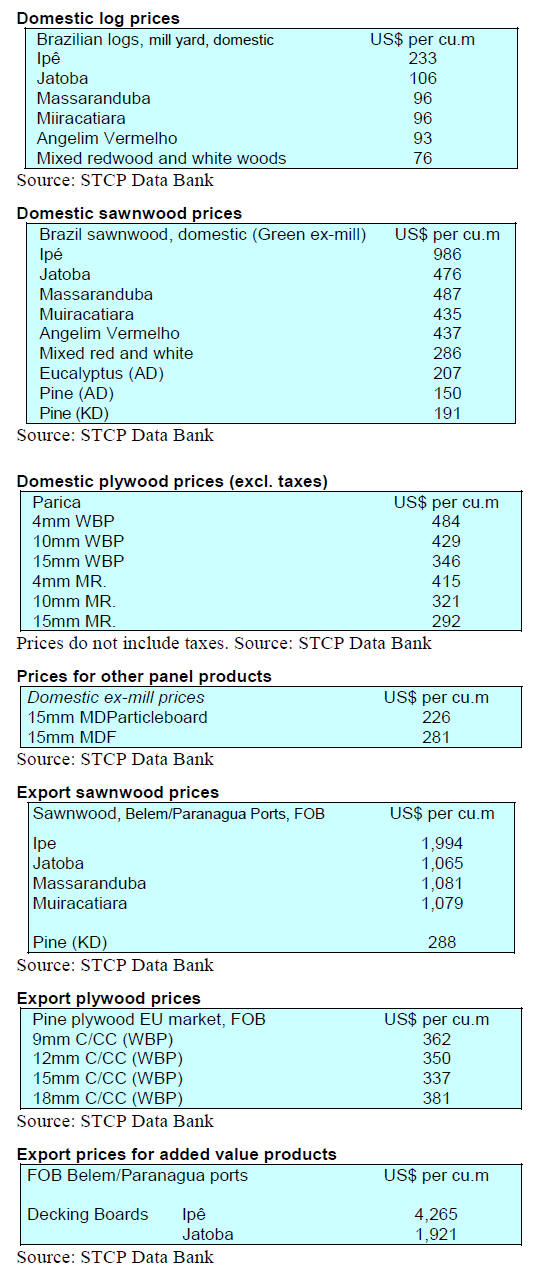
9. PERU
Wood exports represented 0.7% of
non-traditional
exports
The Association of Exporters (ADEX) has reported that
wood product exports between January and October
totalled US$97.7 million, a growth of 32% compared to
the same period last year however, compared to 2019 there
was still a decline of around 4%.
Despite the market opportunities over the ten months of
this year wood product shipments represented less than
1% of total non-traditional exports (US$13 million).
The recovery of timber shipments this year was driven
largely by demand in France and the US which increased
orders by 175% and 61%, respectively. However, the main
international market was China at US$30.2 million
accounting for 31% of the total wood product exports
followed by France US$16 million and the US with
US$11.2 million. The other markets of note were Mexico
(US$6.9 million) and the Dominican Republic (US$6.3
million).
Exports were mainly of semi-manufactured products
(US$58 million) or 59% of the total. The export of
mouldings was significant as were exports of sawnwood
(US$25.4 million). Others included construction products
(US$5.5 million), furniture and parts (US$3.5 million),
veneered wood and plywood (US$2.7 million) and other
manufactured products (US$1.2 million).
Exports of mouldings
The export of mouldings between January and September
this year totalled US$22.5 million, a significant increase
compared to 2020 (US$9.4 million) according to the
ADEX Global Business and Economics Research Center.
Data from the ADEX ‘Trade Business Intelligence
System’ shipments of mouldings in the first nine months
of this year exceeded pre-pandemic levels mainly due to
the higher demand in France which went from US$1.0
million in 2020 to US$8.1 million in 2021. Other markets
included Denmark (US$3.5 million), Belgium (US$2.2
million), the US (US$1.5 million), Mexico (US $1.3
million) and Germany (US$1.3 million). New markets
included Canada, South Africa, Martinique, Italy, Portugal
and theUnited Kingdom.
Mouldings were produced and shipped from Lima
(US$11.4 million), followed by Ucayali (US$6.2 million),
Madre de Dios (US$3.8 million), Callao (US$1.1 million)
and Tacna (US$0.3 million).
In the ADEX report ‘International panorama of molded
lumber’, it was reported that Peru was the fourth world
supplier of moulded lumber in 2020. Indonesia (61% of
the total) was the main exporter of this product, followed
by Brazil and Malaysia.
Assessing and improving community participation
A study carried out by the Forest Resources Supervision
Agency (Osinfor) in cooperation with the USAID Pro-
Bosques Project found that in only half of the forest
permits granted to native communities (CCNN) in the
Amazonian Region was there active community
participation.
While it is not certain the study authors presumed that in
the other permit areas there is a community participation
as a company or employee but that there is no evidence of
this participation.
The study, ‘Analysis on the participation of third parties in
forest activities of the CCNN’ was made on the basis of
information obtained in the Osinfor supervision reports on
623 qualifying forest permits for native communities
throughout the Amazon. These supervisions were carried
out between 2015 and 2019 and were obtained through the
Osinfor Management Information System (SIGOsfc).
In order to convey the results of the study to native
Amazonian communities the main findings of the research
were presented in the cities of Iquitos (Loreto) and
Pucallpa (Ucayali) along with proposals to empower
communities in the negotiation of forest permits.
The Forest Agenda of the Native Communities, promoted
by organisations such as Aidesep and Conap consider it
important to evaluate the formation of a free Public Forest
Regency for communities which would allow them to
have adequate technical advice when they participate in
business timber companies to ensure agreements are
balanced and do not favour one party.
Commercial forest plantations planned for nine
regions
The National Forest and Wildlife Service (SERFOR) in
the Ministry of Agrarian Development and Irrigation
reported that, within the framework of the investment
programme ‘Promotion and Sustainable Management of
Forest Production in Peru’ the management of natural
forests and the promotion of forest plantations for
commercial purposes shall be in accordance with forestry
regulations in nine Regions of Peru.
Through this programme three large investment projects
will be executed in the prioritised Departments. This
programme has been officially presented to the Regional
Governors of Loreto, Pasco and Ucayali who pledged to
support the execution of the programme to strengthen the
role of a Regional Forest and Wildlife Authority and instal
a Consultative Committee for the programme. It should be
noted that the Forestry Programme will be executed with
investments from the Peruvian State and the German
Development Bank (KWF).
